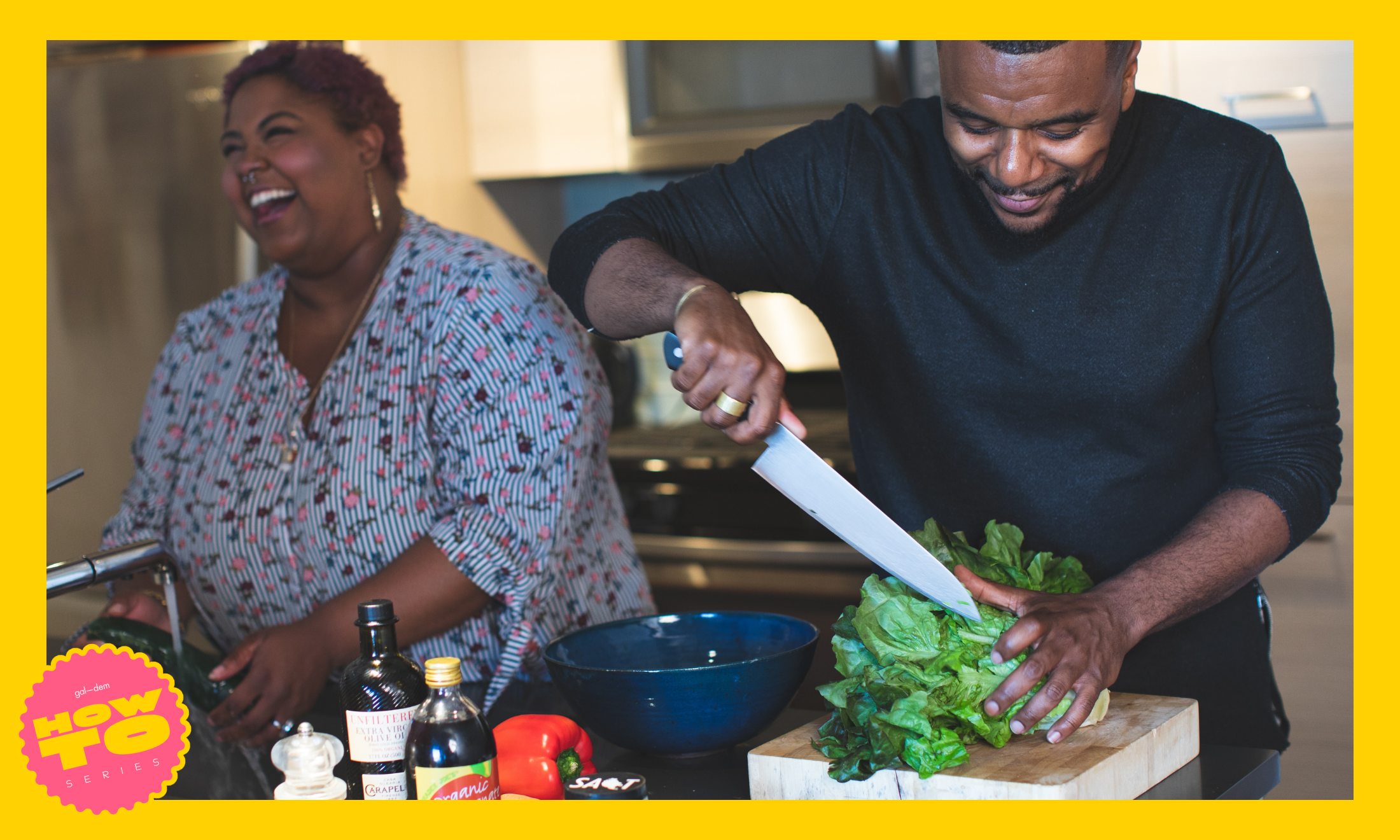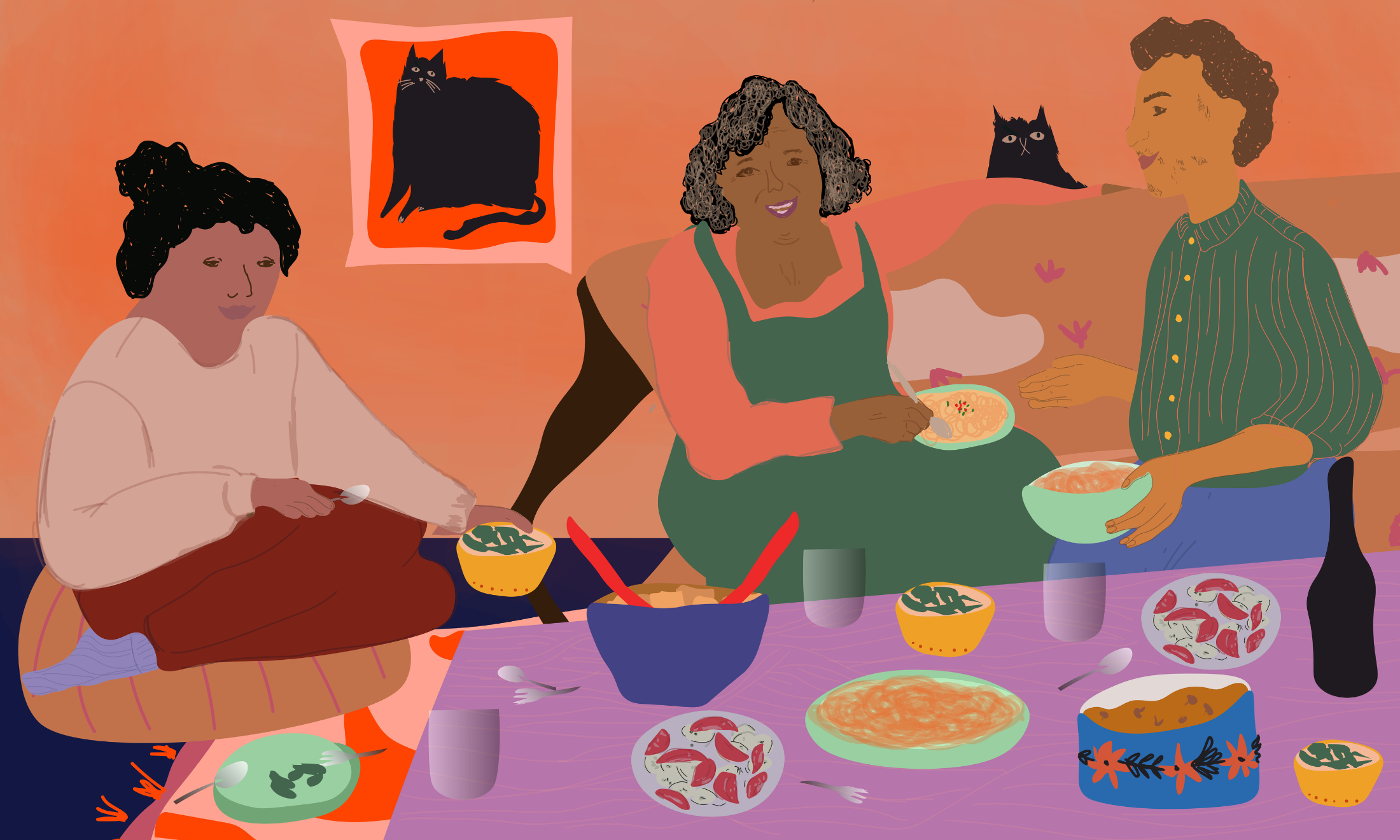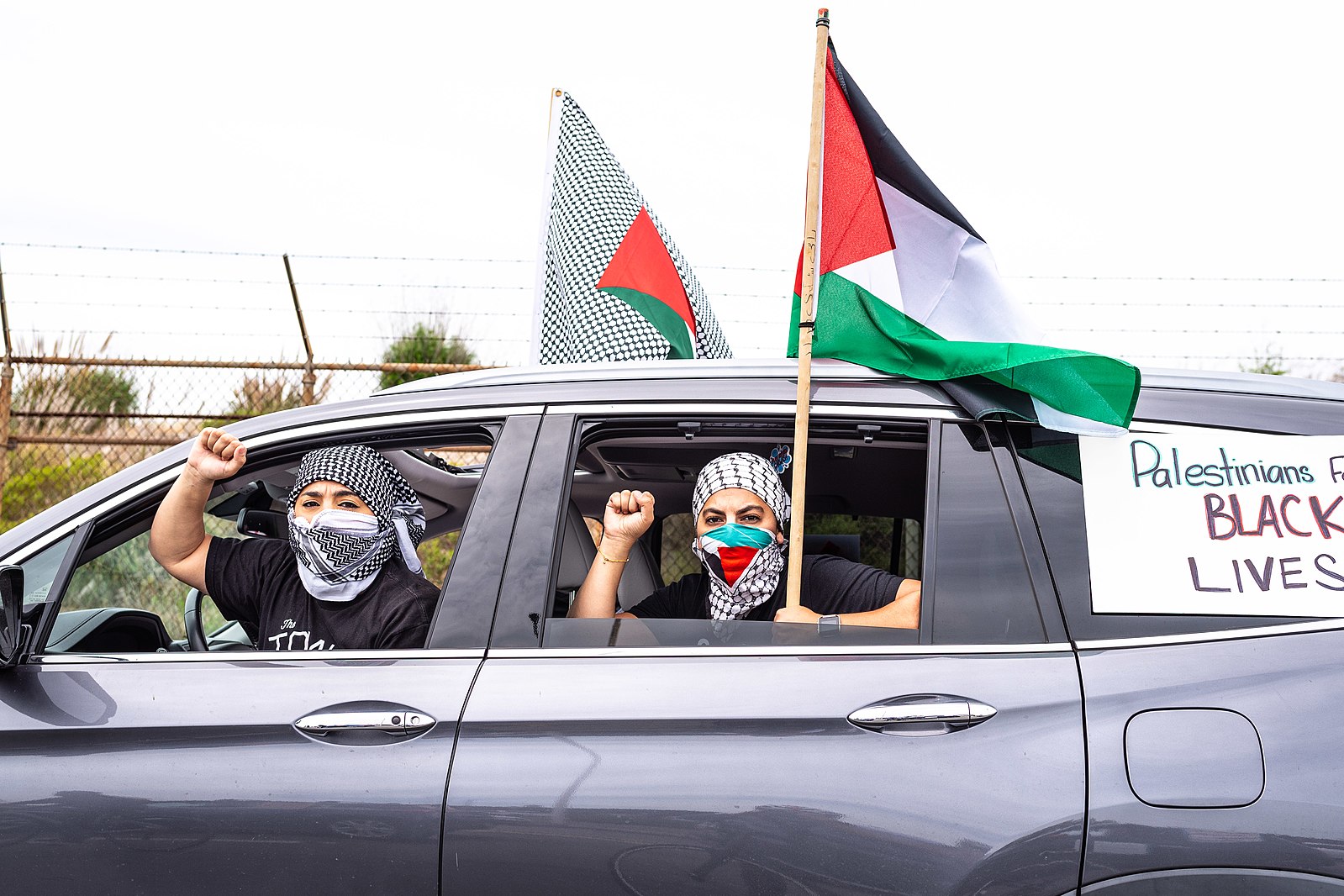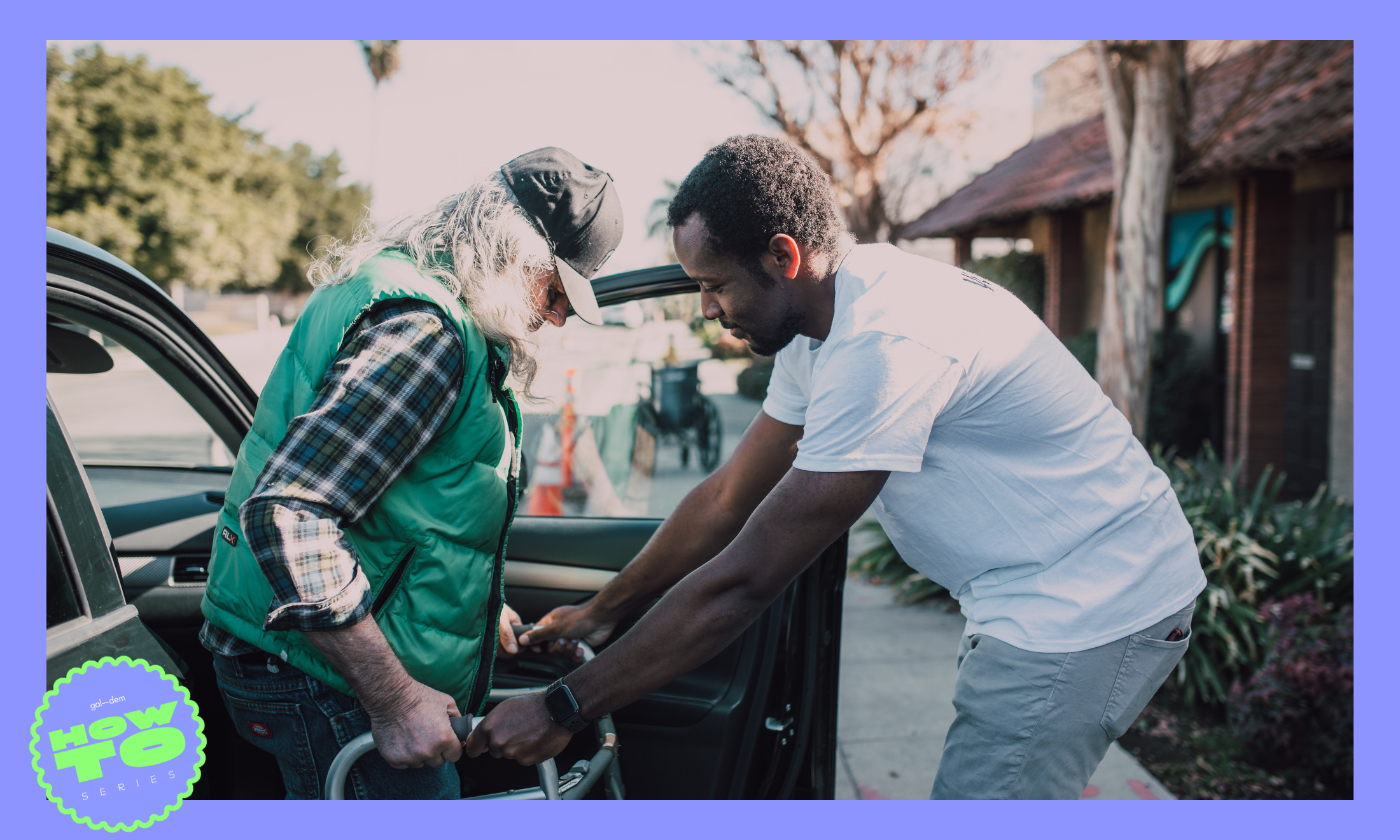
Unsplash/Canva
The gal-dem guide to creating a community kitchen
How To is a gal-dem series dedicated to demystifying practical steps involved in community activism.
Christina Ivey
04 Jul 2022
As the cost of living crisis worsens across the UK, more and more people are struggling to put food on the table. The number of food-insecure households has doubled since January 2020, while food bank usage has grown exponentially under successive Tory governments, from under 70,000 food bank users in 2010 to more than two million in 2021. People with children, or on Universal Credit, disabled people and people of colour are particularly worse off.
Where government policy has failed to provide, charities and community groups have had no option but to play a crucial role in bridging the gap. And when it comes to addressing basic needs like food, community kitchens have grown to help alleviate some of this burden.
Some of us might be familiar with the external face of a community kitchen: a group of people behind tables, serving hot meals, hot drinks, pastries and snacks to people in need. But what does it take to run one?
Here, gal-dem shares everything you need to know about starting your own kitchen.
Where to start?
Organisers rely on crowdsourcing and crowdfunding, and believe integrating with pre-existing community organisations and activists is essential. It’s important to check on whether any food service already exists in the target community, to avoid duplication of effort. If there’s already a kitchen in your area, get in touch to see if you can volunteer.
Identifying a need is crucial to starting any community kitchen, either by speaking with rough sleepers or approaching local councils and places of worship who can help point to where the need is greatest. An uptick in food bank usage can also be taken as a definite sign that there are food security issues in the community.
Steve Bedlam, co-founder of Refugee Community Kitchen (RCK), says the kitchen began as an idea floated between five friends spurred into action by images of refugees fleeing conflicts like the Syrian civil war. They shared a love of food – two of them already worked in catering – so they connected with other activist groups providing food to refugees in Calais. Later on, they retrofitted an abandoned warehouse in ‘The Jungle’ as a kitchen, serving over 3,000 meals a day to those living in the camp.
“We have nurses, council workers, people who are in full-time work coming to get food”
Steve Bedlam
Outreach in London started when one of RCK’s co-founders, Janie Mac, recognised a need for services in Camden. The kitchens serve a range of people, from homeless people to working professionals. It’s important to not make assumptions about the type of person served by a community kitchen; over a decade of austerity has led to more and more people relying on donations or charities for food. In London, Steve says, “We have nurses, council workers, we have people who are in full-time work coming to get food. These are people who work and have children, who have a family, who don’t have access or finances to nutritious food, or just food in some instances.”
Organisers say their outreach is largely organic. Chris Burridge-Barney from Exeter Food Fight says that while the group does use Facebook from time to time, the community it serves follows through word of mouth. Their social media outreach is focused on sourcing volunteers and donations, as well as coordinating with other activist groups on solidarity actions.
How to plan menus?
From the outset, Steve says RCK aimed to serve “food with dignity: healthy, nutritious food, and more importantly, culturally relevant food.” He believes in the power of food to take a person back home, no matter where they are in the world. He says the biggest compliment “is when somebody turns around and says, ‘this food reminds me of home’”.
At the beginning, RCK would have people turning up with shopping bags with donated food that they’d asked for on social media: “We just put out a list and said we need all this stuff, and it came. We asked and we received.”
To source surplus food, Janie advises that it’s worth reaching out to the Corporate Social Responsibility (CSR) teams of businesses in the food industry. Many companies have CSR built into their operations, though it can be hard to find contact details for them on the web. In those cases, it’s best to call a more general contact for the company and ask to be directed through to the CSR team. Chris from Exeter Food Fight adds that it’s “worthwhile reaching out to local food waste action groups and farms which may have surplus produce”. Funding efforts also help to buy staples that are almost never in surplus, like cooking oil, flour and rice.
For RCK, each meal-planning starts with three basics: rice, curry and salad. Beyond that, the chefs do their best to incorporate whatever surplus food has been gathered for that day from their food industry partners. They are usually unaware of what provisions are available until they step inside the kitchen. Janie admits that “this does have its challenges” but “also a little bit of excitement, because you don’t end up creating the same meals all the time.”
Exeter Food Fight only serves vegan meals in an effort to be more ethical and inclusive.
A community kitchen needs to be a safe space, and Janie points out the importance of RCK “for people that are recovering, or want to be in recovery or don’t drink” so none of their meals are cooked with alcohol. Maintaining this environment also preserves the safety of their volunteers, she says.
How many people do you need?
Community kitchens can start with small numbers, but consistency is key. RCK today operates across Calais with three kitchens across London, serving meals four times a week in Camden, once in Brixton and Hackney.
A typical set up in one of their Camden locations looks like three or four people cooking in the day who then handover to a service team of six people. Most crucial among the service team is a lead who can answer questions about the kitchen’s operations whilst others focus on serving food. “If there’s anything that’s a bit untoward, the lead makes sure that everything runs smoothly,” Janie says. In one month, RCK uses 1.5 tonnes of surplus food to distribute over 1,300 meals across their four Camden distribution points.
Having consistent volunteers is important, because they are serving “people that have been let down a thousand times”, says Janie. Community kitchens play a vital role in providing vulnerable people with a sense of stability where the government has neglected its duty. After a service has been established, visitors will readily form queues: “We don’t get a rush. We don’t get any hassle. They all wait really patiently for us to set up and get in line. It’s ‘hi, how are you?’ and it’s really nice – that’s because we’ve proved to them that we’re consistent, and we don’t let them down,” she says.
How do you find a location?
It’s not difficult to find kitchens to use. In London, RCK works with other community groups to scout locations. In Hackney, for example, they use a church’s cafeteria kitchen, whereas in Brixton they work with another community kitchen that doesn’t use the space on Sundays. “You’ll be surprised that if you put a shout-out in an area and say, ‘I need a kitchen to do to do a community kitchen to feed people or to teach people how to cook,’ or anything like that, people will pop up,” he says. “If you don’t ask, you don’t get. You’ve got to put your idea out there, people will respond.”
Another option is preparing and cooking meals beforehand in the homes of volunteers. As for finding a space to distribute, Chris says the most important thing is to stay on council property to avoid being disrupted by private property owners.
What are the health and safety requirements?
“Food hygiene courses are worth doing for knowledge about how to cool down food, how to check temperatures, and how to make sure things are stored properly,” says Janie. She advises that community kitchens contact organisations who provide these certifications, as they may also be willing to sponsor free training as these services are for charitable causes. RCK offers online food safety training to their long-term volunteers.
Janie adds that what a lot of people think is normal because they do it in their own house could be risky in a community kitchen set-up, such as not labelling everything. Basic good hygiene must be adhered to such as frequent handwashing and keeping hair tied back. She emphasises that opening a community kitchen will generate interest from the authorities, so it’s best to have “all those T’s crossed and the I’s dotted”.
Ultimately, community kitchens provide more than just food: “I thought we were going out there just to feed rough sleepers, but we’re not,” Janie says. “That’s the least of what we do. And the service that we provide for a lot of people by just being there – you can’t actually put it into words.”
Our groundbreaking journalism relies on the crucial support of a community of gal-dem members. We would not be able to continue to hold truth to power in this industry without them, and you can support us from £5 per month – less than a weekly coffee. Our members get exclusive access to events, discounts from independent brands, newsletters from our editors, quarterly gifts, print magazines, and so much more!









